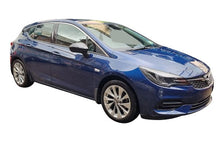
Preparing for the Electric Vehicle Transition
Frequently Asked Questions
1. What are the main differences between electric vehicles (EVs) and hybrid vehicles (HEVs)?
2. What should I consider when preparing to switch to an electric vehicle?
3. What financial considerations are involved in purchasing electric and hybrid vehicles?
4. How does maintenance differ for electric and hybrid vehicles compared to traditional cars?
5. What are the environmental benefits of transitioning to electric and hybrid vehicles?
The automotive industry is witnessing a transformative shift towards electric and hybrid vehicles, necessitating a proactive approach from both consumers and businesses alike. The transition to these innovative transportation methods not only aligns with global sustainability goals but also offers numerous advantages for drivers. In this blog post, we'll explore how you can prepare for this remarkable change. Whether you’re a potential EV buyer or an auto enthusiast, understanding this evolution will keep you ahead of the curve!
Understanding Electric and Hybrid Vehicles
Before diving into preparation strategies, it’s crucial to understand the distinctions between electric vehicles (EVs) and hybrid vehicles (HEVs). Each type has unique benefits and functionalities, making it essential for potential buyers to assess their needs accurately.
1. Electric Vehicles (EVs)
Electric Vehicles, powered entirely by electric energy stored in batteries, have become increasingly popular. They offer zero tailpipe emissions, making them an environmentally friendly choice. With advancements in battery technology, EVs are now boasting longer ranges and quicker charging times than ever before.
2. Hybrid Vehicles (HEVs)
Hybrid Vehicles combine conventional engines with electric propulsion, leading to reduced fuel consumption and lower emissions. These vehicles often switch between gasoline and electric power, depending on driving conditions, providing an efficient alternative for those not ready to fully embrace electric driving.
The Importance of Preparing for Transition
As you consider switching to an electric or hybrid vehicle, preparation is key. The landscape of automotive technology is evolving rapidly, and those who adapt early will benefit the most. Here’s what you need to consider.
1. Understanding Your Driving Needs
Before making the switch, assess your driving habits. Are you primarily commuting within the city, or do you often embark on long-distance travels? Understanding your typical driving patterns can help you choose the right vehicle type.
- Daily Commute: If you drive less than 40 miles a day, an electric vehicle could be a viable option.
- Long-Distance Travel: If you frequently take long trips, consider hybrid models that offer extended range capabilities.
2. Home Charging Infrastructure
One of the essential steps in preparing for an electric vehicle is ensuring that your home is equipped with a suitable charging infrastructure. A home charging station can make the ownership experience much smoother.
- Level 1 Charging: This involves using a standard 120-volt outlet for charging, which is relatively slow but convenient for overnight charging.
- Level 2 Charging: Utilizing a 240-volt outlet significantly speeds up the charging process, making it ideal for regular use.
3. Familiarize Yourself with Charging Network
While home charging is vital, knowing about public charging networks is equally important. Apps and online platforms can help find charging stations nearby, assisting you in planning longer trips. Investigate the availability of charging stations in your vicinity and along your common routes.
Evaluating Financial Considerations
Cost is always a factor when purchasing a vehicle, and electric and hybrid vehicles typically come with distinct financial implications. Let's break it down.
1. Upfront Costs
Electric and hybrid vehicles can often carry higher upfront costs compared to traditional gas-powered cars. However, these costs are offset by potential savings in fuel and maintenance.
2. Incentives and Rebates
Many governments and local authorities offer various incentives to promote electric and hybrid vehicle adoption. Research available programs in your area; you might qualify for tax credits, rebates, or grants that can significantly lessen your purchase cost.
3. Fuel Savings
One of the most compelling reasons to switch is the potential fuel savings. Electric vehicles typically cost much less per mile compared to gasoline vehicles, leading to significant savings over time. Additionally, hybrids benefit from improved fuel economy, yielding lower costs at the pump.
Understanding Maintenance and Longevity
Another consideration as you prepare for the shift involves understanding how maintenance requirements differ with electric and hybrid vehicles.
1. Lower Maintenance Needs
Electric vehicles often come with fewer moving parts compared to traditional vehicles, resulting in lower maintenance needs. There are no oil changes, for example, and brake wear is minimized due to regenerative braking systems.
2. Battery Health
Battery maintenance is critical for electric and hybrid vehicles. Familiarize yourself with the battery performance metrics and warranty details. Regular software updates can also enhance battery longevity and efficiency.
Staying Informed on EV Technology Advancements
The electric vehicle landscape is continually evolving, with manufacturers introducing new technologies, enhancements, and innovations. Staying informed will ensure you make the best decisions when it comes to your electric or hybrid vehicle choice.
1. Join Online Communities
Participating in online forums and communities focused on electric and hybrid vehicles can provide valuable insights and first-hand experiences from current drivers. Whether it's sharing tips about charging or discussing performance, these communities can be an asset.
2. Research and Read
Follow reputable automotive publications and websites to stay up-to-date with the latest trends, model releases, and regulatory changes affecting electric vehicles. Keeping tabs on developments in battery technology and government policies will help you make informed decisions.
Environmental Considerations
Transitioning to electric and hybrid vehicles has significant implications for the environment. Understanding these benefits can also reinforce your decision to embrace this new technology.
1. Reduced Emissions
By switching to electric or hybrid vehicles, you contribute to lowering greenhouse gas emissions. This can have a direct positive impact on air quality and, in turn, public health.
2. Sustainable Energy Sources
As the grid becomes increasingly powered by renewable energy sources, using electric cars will become even more environmentally friendly. This transition aligns with global efforts to combat climate change and promote sustainability.
Your Future on Electric and Hybrid Roads
The shift to electric and hybrid vehicles is not just a trend; it's a revolution in how we view transportation, energy consumption, and environmental responsibility. Preparing for this transition involves understanding your options, planning for charging, evaluating costs, and staying informed about technological advances.
As you gear up to embrace this change, remember that you are not just investing in a vehicle but contributing to a healthier planet and a more sustainable future. Get ready to make driving a greener and more efficient experience. The road ahead is electric!





















